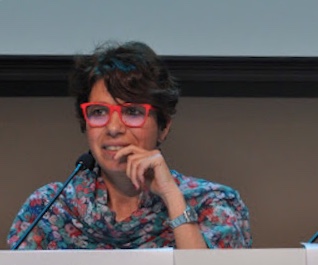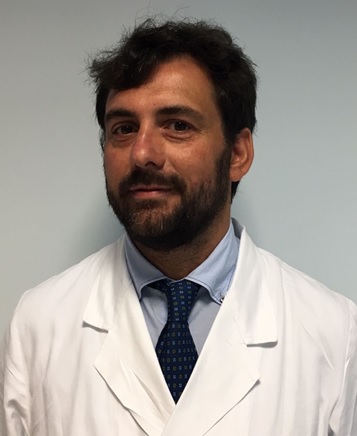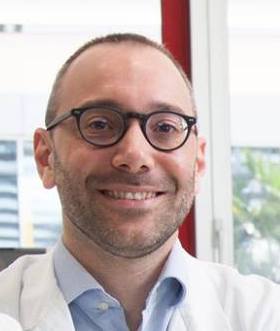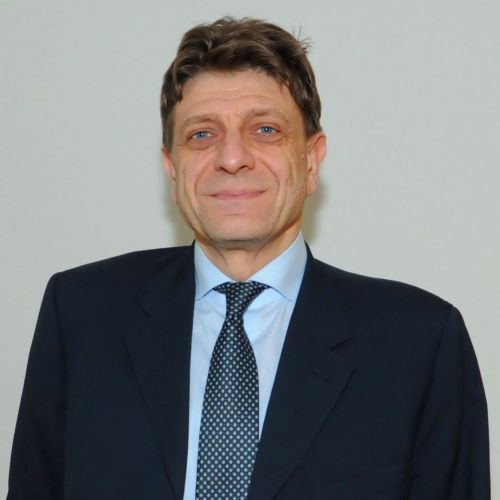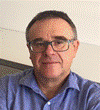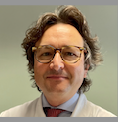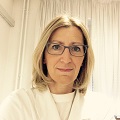Studying at the University of Verona
Here you can find information on the organisational aspects of the Programme, lecture timetables, learning activities and useful contact details for your time at the University, from enrolment to graduation.
Academic calendar
The academic calendar shows the deadlines and scheduled events that are relevant to students, teaching and technical-administrative staff of the University. Public holidays and University closures are also indicated. The academic year normally begins on 1 October each year and ends on 30 September of the following year.
Course calendar
The Academic Calendar sets out the degree programme lecture and exam timetables, as well as the relevant university closure dates..
| Period | From | To |
|---|---|---|
| 1 SEMESTRE PROFESSIONI SANITARIE | Oct 1, 2021 | Dec 23, 2021 |
| 1° e 2° semestre (corsi annuali) PROFESSIONI SANITARIE | Oct 1, 2021 | Sep 30, 2022 |
| 2 SEMESTRE PROFESSIONI SANITARIE | Jan 10, 2022 | Sep 30, 2022 |
| Session | From | To |
|---|---|---|
| 1^ SESSIONE A.A. 2020/2021 | Oct 1, 2021 | Nov 30, 2021 |
| 2^ SESSIONE A.A. 2020/2021 | Mar 1, 2022 | Apr 30, 2022 |
| Period | From | To |
|---|---|---|
| Festa di Tutti i Santi | Nov 1, 2021 | Nov 1, 2021 |
| Festa dell'Immacolata Concezione | Dec 8, 2021 | Dec 8, 2021 |
| Festa della Liberazione | Apr 25, 2022 | Apr 25, 2022 |
| Festa della Repubblica | Jun 2, 2022 | Jun 2, 2022 |
Exam calendar
Exam dates and rounds are managed by the relevant Medicine Teaching and Student Services Unit.
To view all the exam sessions available, please use the Exam dashboard on ESSE3.
If you forgot your login details or have problems logging in, please contact the relevant IT HelpDesk, or check the login details recovery web page.
Should you have any doubts or questions, please check the Enrollment FAQs
Academic staff
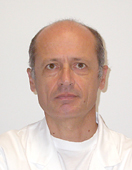
Bisoffi Zeno
 zeno.bisoffi@sacrocuore.it
zeno.bisoffi@sacrocuore.it
 +390456013326
+390456013326
 oncologia.medica.leg@aulsslegnago.it
oncologia.medica.leg@aulsslegnago.it
 daniela.cafaro@univr.it
daniela.cafaro@univr.it
 marco.carradore@univr.it
marco.carradore@univr.it
 giulio.cesaro@aulsslegnago.it
giulio.cesaro@aulsslegnago.it
Cunico Laura
 laura.cunico@univr.it
laura.cunico@univr.it
 zenodebattisti@tiscali.it
zenodebattisti@tiscali.it
 concetta.dellorto@univr.it
concetta.dellorto@univr.it
 Kiaretta@libero.it
Kiaretta@libero.it
Study Plan
The Study Plan includes all modules, teaching and learning activities that each student will need to undertake during their time at the University.
Please select your Study Plan based on your enrollment year.
1° Year
| Modules | Credits | TAF | SSD |
|---|
Professional Laboratories (1st year)
2° Year activated in the A.Y. 2022/2023
| Modules | Credits | TAF | SSD |
|---|
Professional Laboratories (2nd year)
3° Year activated in the A.Y. 2023/2024
| Modules | Credits | TAF | SSD |
|---|
Professional Laboratories (3rd year)
Corso di Rianimazione di Base con utilizzo del defibrillatore semiautomatico
| Modules | Credits | TAF | SSD |
|---|
Professional Laboratories (1st year)
| Modules | Credits | TAF | SSD |
|---|
Professional Laboratories (2nd year)
| Modules | Credits | TAF | SSD |
|---|
Professional Laboratories (3rd year)
Corso di Rianimazione di Base con utilizzo del defibrillatore semiautomatico
Legend | Type of training activity (TTA)
TAF (Type of Educational Activity) All courses and activities are classified into different types of educational activities, indicated by a letter.
Pathophysiology applied at Nursing (2021/2022)
The teaching is organized as follows:
INFERMIERISTICA CLINICA
Credits
3
Period
See the unit page
Academic staff
See the unit page
Learning outcomes
The course introduces the student to the basic concepts of major diseases and the fundamental pathogenetic processes, allowing them to correlate cellular homeostatic mechanisms to alterations of the organ functions and clinical manifestations of disease. Students will understand the basic principles of pharmacology, especially in pharmacokinetic and pharmacodynamic mechanisms, and the benefit and risk profile of the drugs. The course will helps students to develop an approach oriented to prevention, assessment and management of respiratory, urinary and intestinal function alteration and the multidimensional assessment of pain. PHARMACOLOGY: The course aims to provide general knowledge about the functions and the use of drug therapy, in the fields of pharmacodynamics, pharmacokinetics, pharmacoepidemiology and pharmacovigilance. Concepts of pharmacology are essential to the development of the nurse's own skills in management and control of drug therapies, as well in patient education. This course is preparatory to the study of the individual classes of drugs, which starts with anti-inflammatory and antibacterial drugs and will be completed in the clinical pharmacology module. SEMEIOTICS AND PHYSIOPATHOLOGY: The course introduces the student to the fundamental concepts of pathophysiology and semiotics, implicated in the activation of organ damage and in the development of the main diseases. The information necessary for understanding the set of events leading to the disease will be selected using a practical approach. Any further details will be reserved for the lessons that specifically deal with the organ and the apparatus. Every fundamental alteration will be explored within a specific organ and the different peculiar manifestations of the organ itself will be clarified. The lessons will also include the semeiotic part, describing the objective signs that characterize diseases. The treatment of semeiotics will be performed after treating the pathophysiology of the various organs. At the end of the course, students must be able to know the general mechanisms that lead to the disease and to identify their characteristics. CLINICAL NURSING I and II: The course offers the contents and the assistance methodology related to person's needs and to "fundamental" nursing care. The course will helps students to develop an approach oriented to prevention, assessment and management of respiratory, urinary and intestinal function alteration and the multidimensional assessment of pain. During teaching, frontal teaching methods will be privileged associated with sessions of application of the contents treated in care situations (guided exercises, video projections, clinical case analysis, testimony readings will be used to analyze and reflect on the perceptions and needs of the patients and family members). GENERAL PATHOLOGY: The course develops the preparatory contents for understanding the basic mechanisms of diseases. The following contents will be covered: the general principles and disorders of homeodynamics of complex systems, the main pathogenic esogenous and endogenous factors, biological damage, responses to damage, with particular reference to inflammation, the processes of healing and chronicity, immunity , haemostasis and thrombosis, vascular pathology and notions of general oncology. The course aims to help the student to understand the essential links between clinical analysis and fundamental mechanisms, facilitating the reading of the conceptual basis of the disease.
Program
------------------------
MM: FARMACOLOGIA GENERALE
------------------------
GENERAL PRINCIPLES OF PHARMACOLOGY Definition of drug, medicinal product, generic drug, biosimilar, galenic and magistral preparations. Origin of drugs and the process of drug development. The market of drugs in Italy. Leaflet of a drug. Off-label use. International Classification System of drugs. Defined Daily Dose (DDD). Symptomatic, curative, preventive and substitutive drugs. Different actions of drugs: systemic or local, direct or indirect, primary or secondary, collateral, early or late onset. Pharmacokinetics: absorption (mechanisms, routes of administration, formulations), distribution (plasma protein binding, tissue vascularization, blood-brain barrier and placental transfer of drugs), biotransformation reactions and excretion of drugs. Pharmacokinetic parameters: bioavailability, volume of distribution, elimination half-life,clearance. Pharmacodynamics: general mechanisms of action, receptor definition, drug-receptor interaction,agonism and antagonism, affinity and intrinsic activity of drugs. ADVERSE DRUG REACTIONS AND TOXICOLOGY Clinical risks related to drug use: therapeutic errors and classification of adverse drug reactions. Pharmacovigilance: spontaneous reporting and the role of nurse. Drug dependence. Embryo-fetal toxicity. PHARMACOTHERAPY The concepts of risk/benefit and cost/benefit applied to drug treatments. “Placebo” and “Compliance” definitions. Dosage, maximum dose, effective dose, posology, therapeutic index. Therapeutic plasma levels of drugs, peak concentrations, therapeutic range, accumulation, toxic concentrations. Therapeutic drug monitoring. Drug interactions. Variability in drug response: therapeutic problems in neonates and children, elderly, patients with renal or hepatic insufficiency. Antimicrobial therapy: selective toxicity, spectrum of action, bacteriostatic and bactericidal activity, microbial resistance. Pharmacological characteristics and adverse effects of the most important groups of antibiotics, antifungals and antivirals. Non-steroidal antiinflammatory drugs and paracetamol.
------------------------
MM: SEMEIOTICA E FISIOPATOLOGIA
------------------------
- concept of cellular homeostasis - physiopathology of the hemopoietic, respiratory, gastrointestinal, urinary and cardiovascular apparatuses
------------------------
MM: INFERMIERISTICA CLINICA
------------------------
------------------------ MM: Infermieristica clinica 1 ------------------------ Urinary phaseout: the signs and symptoms more frequent in urination and major alterations a) assessment of urinary function and diagnostic procedures b) urinary tract infection (UTI) c) chronic and acute urinary retention: care interventions and acute management protocol d) care management of people with bladder catheter Pressure ulcers - Prevention - Treatment ------------------------ MM: Infermieristica clinica 2 ------------------------ 1) Objective examination: methods, concept of head-to-feet evaluation 2) Intestinal elimination: the most frequent signs and symptoms in intestinal disorders and the main alterations 3) Breathing: general assessment and definition of the main alterations; oxygen therapy 4) Pain: a method to ascertain acute and chronic pain
------------------------
MM: PATOLOGIA GENERALE
------------------------
The program in brief They will be explained: The general concepts of illness, disease and etio-pathology; the cell-based disease; oncology elements; immunity and inflammation Detailed program 1) Generalities a) Introduction to general pathology: fields and discipline purposes b) The disease: definition; causes (determinants, adjuvants, occasional); pathogenesis; course (recurrence, relapse); outcomes (healing, chronic, death); diagnosis (signs and physical examination, symptoms and medical history). 2) Cell pathology a) General concepts: the disease as the expression of cell damage? b) Degenerative changes of the cells: Causes (genetic, nutritional, from chemical, physical, from lack of oxygen, by living agents). reversible cell damage, irreversible cell death. morphological cell changes related to the damage: various aspects of degeneration and necrosis c) Modifications to steady-state cell: stationary phones were molecular changes (hypertrophy, atrophy, atrophy) and their causes cellular changes (hyperplasia, hypoplasia, aplasia) and their causes d) Alterations of cellular differentiation processes: Metaplasia, anaplasia, dysplasia 3) Oncology Definition of neoplastic cells, benign and malignant tumors, Natural history of cancer: advancement, growth, progress, general effects on body. Metastasis 4) Inflammation a) General concepts: utility of the inflammatory process b) Acute inflammation: local and general manifestations of inflammation; causes; pathogenetic mechanisms (vascular component, the white blood cell component and the chemical mediators). The exudate and types of inflammation (erythema, serous, catarrhal, purulent, fibrinous, hemorrhagic, necrotizing). The consequences on 'body (abscess, phlegmon, fistula, adhesion, synechiae, payments). c) Chronic inflammation: Causes; pathogenetic mechanisms; granuloma and granulomatous diseases.
Bibliography
Examination Methods
------------------------
MM: FARMACOLOGIA GENERALE
------------------------
Learning evaluation of the topics related to general pharmacology is made inside the written exam of "Pathophysiology applied at Nursing": 15 questions with multiple-choice answers (1-2 correct between 5) or semi-structured are provided.
------------------------
MM: SEMEIOTICA E FISIOPATOLOGIA
------------------------
Written multiple choices test
------------------------
MM: INFERMIERISTICA CLINICA
------------------------
------------------------ MM: Infermieristica clinica 1 ------------------------ Written test ------------------------ MM: Infermieristica clinica 2 ------------------------ written exam with closed questions with multiple choice answers and / or open questions with short answer
------------------------
MM: PATOLOGIA GENERALE
------------------------
Written examination with questions with multiple answers.
Career prospects
Module/Programme news
News for students
There you will find information, resources and services useful during your time at the University (Student’s exam record, your study plan on ESSE3, Distance Learning courses, university email account, office forms, administrative procedures, etc.). You can log into MyUnivr with your GIA login details: only in this way will you be able to receive notification of all the notices from your teachers and your secretariat via email and soon also via the Univr app.
Gestione carriere
Tirocinio professionalizzante
Finalità del TirocinioLe attività di tirocinio sono finalizzate a far acquisire allo studente competenze specifiche previste dal profilo professionale. Per conseguire tali finalità formative, si possono attivare convenzioni con strutture, che rispondano ai requisiti di idoneità per attività, dotazione di servizi e strutture.
I 60 crediti minimi riservati al tirocinio sono da intendersi come impegno complessivo necessario allo studente per raggiungere le competenze professionali “core” previste dal rispettivo profilo professionale.
Il tirocinio professionale comprende:
- sessioni tutoriali che preparano lo studente all’esperienza;
- esercitazioni e simulazioni in cui si sviluppano le abilità tecniche, relazionali e metodologiche in situazione protetta prima o durante la sperimentazione nei contesti reali;
- esperienze dirette sul campo con supervisione;
- sessioni tutoriali e feedback costanti;
- compiti didattici, elaborati e approfondimenti scritti specifici e mandati di studio guidato.
Le esperienze di tirocinio devono essere progettate, valutate e documentate nel percorso dello studente. Durante ogni esperienza di tirocinio lo studente riceve valutazioni formative sui suoi progressi sia attraverso colloqui e schede di valutazione.
Al termine di ciascun anno di corso viene effettuata una valutazione sommativa (certificativa) per accertare i livelli raggiunti dallo studente nello sviluppo delle competenze professionali attese. La valutazione viene effettuata da una Commissione presieduta dal Coordinatore della Didattica Professionale (CDP), e composta da almeno un docente e da un Tutor professionale. Tale valutazione è la sintesi delle valutazioni formative, via via, documentate durante l’anno di corso, il profitto raggiunto negli elaborati scritti e le performance delle abilità tecniche assistenziali e relazionali dimostrate all’esame di tirocinio che può essere realizzato con esami simulati, colloqui, prove scritte applicative.
L’esame annuale di tirocinio prevede un unico appello per anno accademico, salvo particolari situazioni per le quali la commissione didattica potrà concedere un appello straordinario.
La valutazione sommativa del tirocinio sarà espressa e registrata nella carriera in trentesimi in base al livello di raggiungimento degli obiettivi. Le modalità di registrazione del voto di profitto sono:
- “assente” pre-iscritto che non ha frequentato alcuna esperienza di tirocinio;
- “ritirato” sospensione durante il tirocinio per problemi di salute, gravidanza o per motivazioni personali;
- “insufficiente” non raggiungimento del livello atteso negli obiettivi formativi (anche se lo studente ha sospeso la frequenza al tirocinio o non sostenuto l’esame finale).
Il Coordinatore della Didattica Professionale (CDP), ammette alla frequenza dell’esperienza di tirocinio previsto per l’anno di corso, gli studenti che hanno frequentato regolarmente:
- le attività teoriche, in particolare gli insegnamenti delle discipline professionali dell’anno in corso e dell’anno precedente
- laboratori professionali ritenuti propedeutici al tirocinio
Per maggiori informazioni consultare la pagina del servizio
Guida ai programmi degli insegnamenti
Guida ai programmi degli insegnamenti
Documents
| Title | Info File |
|---|---|
|
|
pdf, it, 1594 KB, 12/12/22 |
|
|
pdf, it, 1310 KB, 02/09/21 |
Graduation
Documents
| Title | Info File |
|---|---|
|
|
pdf, it, 242 KB, 19/01/24 |
|
|
pdf, it, 80 KB, 06/04/24 |
|
|
pdf, it, 43 KB, 06/04/24 |
|
|
pdf, it, 44 KB, 09/04/24 |
|
|
pdf, it, 148 KB, 06/04/24 |
|
|
pdf, it, 108 KB, 06/04/24 |
|
|
pdf, it, 115 KB, 06/04/24 |
|
|
pdf, it, 1487 KB, 18/02/22 |
|
|
pdf, it, 437 KB, 22/03/24 |
|
|
pdf, it, 957 KB, 22/03/24 |
|
|
pdf, it, 424 KB, 19/01/24 |
Linee guida per riconoscimento cfu
Lo studente che intende chiedere il riconoscimento di moduli o insegnamenti pregressi dovrà presentare domanda, entro il 30 novembre dell’anno accademico in corso, seguendo le indicazioni indicate al link seguente: https://www.univr.it/it/i-nostri-servizi/segreterie-studenti/gestione-carriere-studenti-medicina-e-chirurgia/riconoscimento-crediti-acquisiti-da-una-carriera-pregressa-medicina
Documents
| Title | Info File |
|---|---|
|
|
pdf, it, 295 KB, 09/11/21 |
Orario lezioni
COMUNICAZIONE DEL PRESIDENTE DEL COLLEGIO DIDATTICO
Carissime Studentesse,
Carissimi Studenti,
di seguito un promemoria relativo alle modalità di erogazione della didattica per il corso di studio in Infermieristica A.A. 2022/2023.
In ottemperanza alle linee guida della Commissione didattica di Ateneo, che prevedono una didattica improntata ad un pieno recupero delle modalità regolari di erogazione in presenza, la Commissione didattica del CdL nella seduta del 29 settembre 2022, ha deliberato il pieno ritorno all’utilizzo della didattica frontale in presenza.
Solo nei casi di comprovata positività al COVID-19, e/o in situazioni di particolare fragilità (sempre correlate alla pandemia) sarà previsto il collegamento sincrono in modalità streaming; a tal proposito ogni Docente, sulla propria pagina web, darà chiare indicazioni sulla modalità di fruizione della didattica.
La modalità asincrona (registrazioni delle lezioni) non è prevista.
Nell’augurarvi un buon Anno Accademico, vi saluto cordialmente
Prof. Paolo F Fabene
Documents
| Title | Info File |
|---|---|
|
|
pdf, it, 8849 KB, 20/10/22 |
|
|
pdf, it, 108 KB, 29/02/24 |
|
|
pdf, it, 90 KB, 22/04/24 |
|
|
pdf, it, 85 KB, 05/04/24 |
Student login and resources
Attività didattiche regime part-time
Modalità di richiesta
La domanda di iscrizione part-time può essere presentata all'inizio di ogni anno accademico e comunque entro il 30 novembre di ogni anno. Entro lo stesso termine, se necessario, lo studente potrà richiedere di tornare al regime full-time. Al link seguente la pagina del servizio https://www.univr.it/it/i-nostri-servizi/segreterie-studenti/flessibilita-nella-frequenza-dei-corsi/possibilita-di-iscrizione-part-time-e-ripristino-full-time
Una volta inviata la domanda, lo studente concorda in via preventiva con il Coordinatore della didattica professionale (CDP), il piano di studi che intende perseguire nel periodo di part-time compilando il modulo in allegato
Documents
| Title | Info File |
|---|---|
|
|
octet-stream, it, 1309 KB, 21/10/22 |
Appelli d'esame
Documents
| Title | Info File |
|---|---|
|
|
pdf, it, 92 KB, 17/01/24 |
|
|
pdf, it, 84 KB, 17/01/24 |
|
|
pdf, it, 92 KB, 22/04/24 |
|
|
pdf, it, 145 KB, 17/01/24 |
Dossier Informativi per lo studente
Documents
| Title | Info File |
|---|---|
|
|
pdf, it, 271 KB, 19/01/24 |
|
|
pdf, it, 235 KB, 19/01/24 |
|
|
pdf, it, 216 KB, 19/01/24 |




